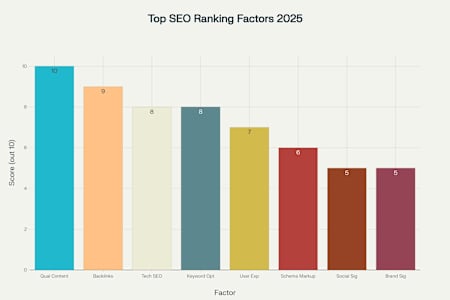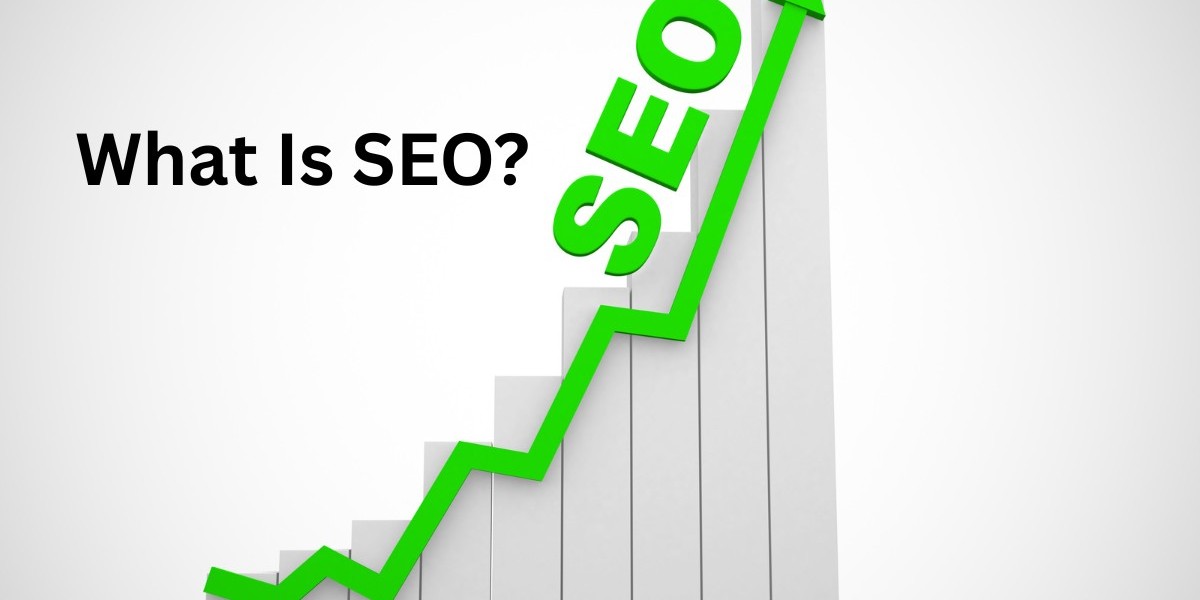Search Engine Optimization (SEO) is the foundation of digital visibility and organic growth in today’s online world. Whether you run a blog, a business, or a global brand, understanding and leveraging SEO is essential for reaching your audience, building authority, and achieving sustainable success.
This blog post explores SEO in 2025: its definition, core principles, evolving best practices, and actionable strategies. You’ll find detailed explanations, practical tables, and data-driven charts, all crafted to align with Google’s latest guidelines for helpful, people-first content.
For SEO Services Click Here
What Is SEO?
SEO stands for Search Engine Optimization. It is the art and science of improving a website’s visibility in search engine results pages (SERPs) by optimizing content, structure, and user experience. The goal is to attract qualified, organic (unpaid) traffic by ensuring your website is relevant, valuable, and accessible to both users and search engines.
SEO is not just about ranking higher; it’s about connecting the right audience with the right content at the right time.
The Evolution of SEO
SEO has evolved from simple keyword stuffing to a multifaceted discipline involving semantic search, user intent, technical excellence, and content authority. In 2025, search engines like Google use advanced AI, natural language processing, and experience-driven ranking signals to deliver the most helpful results.
How Search Engines Work
Understanding how search engines operate is crucial for effective SEO. The process involves three main stages:
1. Crawling
Search engines use automated bots (crawlers or spiders) to discover and scan web pages across the internet. These bots follow links and sitemaps to find new and updated content.
2. Indexing
Crawled pages are analyzed and stored in a massive database called the index. Only indexed pages can appear in search results. Proper site structure, clear headings, and unique content help ensure effective indexing.
3. Ranking
When a user enters a query, search engines use complex algorithms to rank indexed pages based on relevance, quality, and user experience. The most helpful and authoritative results are displayed first.
Why SEO Matters in 2025
The Central Role of SEO
SEO remains the most cost-effective and sustainable way to drive targeted traffic, build brand visibility, and generate leads or sales. In 2025, with billions of searches conducted daily, search engines are the primary touchpoint for consumers seeking information, products, and services.
Key Benefits of SEO
Long-Term Traffic: Organic rankings provide steady, ongoing traffic without recurring ad spend.
Brand Authority: High rankings build trust and credibility with users.
Cost Efficiency: SEO requires upfront investment but offers lower long-term costs compared to paid ads.
Sustainable Growth: Quality SEO compounds over time, supporting business expansion and resilience.
Core Components of SEO
SEO is built on three pillars: On-Page, Off-Page, and Technical SEO.
On-Page SEO
Focuses on optimizing individual pages for target keywords, content quality, and user engagement.
Key Elements
Title tags and meta descriptions
Keyword-rich headings (H1, H2, H3)
High-quality, original content
Internal linking
Image alt text
Structured data
Off-Page SEO
Involves building authority and trust through external signals.
Key Elements
Backlinks from reputable sites
Social media engagement
Brand mentions
Online reviews
Technical SEO
Ensures your website is accessible, fast, and easy for search engines to crawl and index.
Key Elements
Site speed and Core Web Vitals
Mobile-friendliness
Secure HTTPS connections
XML sitemaps and robots.txt
Clean URL structure
SEO Best Practices According to Google
Google’s guidelines emphasize helpful, people-first content and technical excellence. Here are the core recommendations:
Content Quality
Create useful, trustworthy, and original content.
Address user intent and provide comprehensive answers.
Avoid duplicate or thin content.
Keyword Optimization
Use keywords naturally in titles, headings, and throughout the content.
Focus on semantic relevance and keyword clusters.
Technical Optimization
Ensure all resources (CSS, JavaScript, images) are crawlable.
Optimize site speed, mobile usability, and structured data.
Simplify URL structures and avoid broken links.
Authority and Trust
Build natural, editorially-given backlinks.
Qualify outbound links with appropriate tags.
Engage in communities to promote your content authentically.
Key SEO Statistics and Trends for 2025
SEO is constantly evolving. Here are some of the most important statistics shaping the industry in 2025:
| Statistic | Value | Source |
|---|---|---|
| Google searches per second | 99,000+ | |
| Organic clicks vs. paid | 94% vs. 6% | |
| Users never going past page 1 | 75% | |
| Featured snippet CTR | 42.9% | |
| Mobile internet usage | 92.3% | |
| Long-form content (3,000+ words) traffic boost | 3x | |
| SEO market value (2030 projection) | $143.9B |
Takeaways
Organic search dominates user clicks.
Mobile optimization is critical.
Long-form, in-depth content performs best.
Featured snippets drive high click-through rates.
SEO is a rapidly growing, high-value industry.
SEO vs. PPC: A Comparative Table
Both SEO and Pay-Per-Click (PPC) are essential digital marketing strategies, but they serve different purposes.
| Feature | SEO | PPC |
|---|---|---|
| Traffic Source | Organic | Paid |
| Cost | Indirect (time/resources) | Direct (per click) |
| Time to Results | Months | Immediate |
| Sustainability | Long-term | Short-term |
| Credibility | High (organic trust) | Moderate (ad label) |
| Control | Less (algorithm-driven) | More (campaign settings) |
| ROI (average, varies by industry) | Up to 8.75:1 | 2:1 |
| Ideal For | Brand authority, sustained growth | Quick wins, targeted campaigns |
Top SEO Ranking Factors for 2025

SEO success relies on a combination of factors. According to industry research, these are the top ranking factors for 2025:
Quality Content: The single most important factor. Google prioritizes helpful, original, and intent-focused content.
Backlinks: High-quality, editorially-given links from authoritative sources.
Technical SEO: Fast site speed, mobile-friendliness, and crawlability.
Keyword Optimization: Natural use of relevant keywords and semantic clusters.
User Experience (UX): Easy navigation, clear structure, and engaging design.
Schema Markup: Structured data to help search engines understand your content.
Social Signals: Shares, likes, and engagement across social platforms.
Brand Signals: Online reputation and brand mentions.
Top 8 SEO Ranking Factors for 2025 and Their Relative Importance
Common SEO Myths and Mistakes
Myths
SEO is a one-time task: SEO requires ongoing effort and adaptation.
More keywords = better ranking: Quality and relevance matter more than keyword density.
Backlinks are all that matter: Content quality and technical SEO are equally important.
Mistakes
Ignoring mobile optimization
Overlooking site speed and Core Web Vitals
Creating duplicate or thin content
Neglecting internal linking
Failing to update old content
Future of SEO: AI, Voice, and Zero-Click Search
AI and Generative Search
AI-driven search and content generation are reshaping SEO. Google’s algorithms now better understand context, intent, and semantic relationships, rewarding content that is comprehensive and people-first.
Voice and Visual Search
Voice and visual search are on the rise, requiring content to be conversational, concise, and well-structured for featured snippets and AI overviews.
Zero-Click Searches
More searches are answered directly on the results page, reducing click-throughs. Optimizing for featured snippets, FAQs, and structured data is essential for visibility.
SEO in 2025 is more dynamic and essential than ever. It’s not just about ranking for keywords, but about delivering value, building trust, and creating seamless experiences for users. By focusing on high-quality content, technical excellence, and Google’s best practices, you can achieve lasting visibility and authority in an ever-evolving digital landscape.
Whether you’re new to SEO or looking to refine your strategy, the principles in this guide will help you navigate the complexities of modern search and unlock the full potential of your online presence.
How SEO Helps Your Website Rank Higher on Google and Other Search Engines
Search Engine Optimization (SEO) is the process of enhancing your website so it appears more prominently in search engine results for relevant queries. Here’s how SEO directly contributes to higher rankings on Google and other search platforms:
1. Improves Website Visibility and Relevance
SEO helps search engines understand your website’s content, structure, and purpose. By optimizing for keywords that your audience is searching for, you make it easier for Google and Bing to match your pages to user queries, increasing your chances of appearing near the top of the results.
2. Enhances Content Quality and Authority
High-quality, authoritative, and original content is a cornerstone of SEO. Search engines prioritize content that thoroughly answers user questions, demonstrates expertise, and provides value. Regularly updating your content and ensuring it addresses user intent signal to search engines that your site is a reliable resource, which can boost your rankings.
3. Optimizes On-Page Elements
On-page SEO involves optimizing elements like title tags, meta descriptions, headings, image alt text, and internal links. These improvements help search engines better understand your content and improve user experience, both of which are important ranking factors.
4. Builds Trust and Authority Through Backlinks
Earning backlinks from reputable websites is a strong signal of trust and authority to search engines. The more high-quality sites that link to your content, the more likely search engines are to view your site as authoritative, which can result in higher rankings.
5. Addresses Technical SEO and User Experience
Technical SEO ensures your website is easy for search engines to crawl and index. This includes having a clear site structure, fast loading times, mobile-friendliness, secure HTTPS, and fixing broken links. Google’s algorithms also factor in user experience metrics like Core Web Vitals, which measure loading speed, interactivity, and visual stability.
6. Aligns With Search Engine Algorithms and E-E-A-T
Google’s algorithms evaluate Experience, Expertise, Authoritativeness, and Trustworthiness (E-E-A-T) when ranking pages. By following SEO best practices—creating expert content, earning authoritative links, and maintaining a trustworthy site—you align with these guidelines and increase your chances of ranking higher.
7. Drives Sustainable, Organic Traffic
Unlike paid advertising, SEO delivers ongoing, organic traffic. Once your site ranks highly, you continue to receive visitors without additional ad spend. This long-term visibility is essential for building brand awareness and attracting new customers.
SEO in Action: Key Steps for Higher Rankings
| SEO Strategy | How It Helps Your Ranking |
|---|---|
| Keyword Research | Targets the terms your audience is searching for |
| Quality Content Creation | Answers user intent and builds authority |
| On-Page Optimization | Improves relevance and user experience |
| Backlink Building | Increases trust and authority in your niche |
| Technical SEO Improvements | Ensures your site is crawlable and user-friendly |
| Ongoing Performance Tracking | Identifies opportunities and maintains improvements |
Conclusion
SEO helps your website rank higher by making it easier for search engines to understand, trust, and recommend your content to users. By focusing on content quality, technical excellence, and user experience, SEO ensures your site stands out in competitive search results, driving more organic traffic and supporting your long-term digital success.
What Is SEO? An In-Depth, Semantic, and Google-Compliant Guide for 2025.






